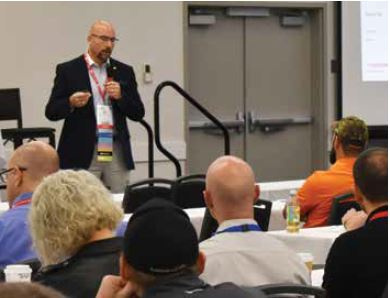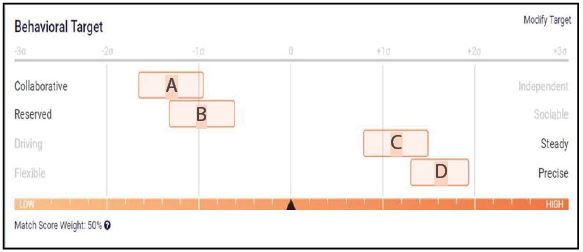Job Satisfaction: The Right Jobs for the Right People
Job Satisfaction: The Right Jobs for the Right People
BCMC Session: Knowing Your People to Keep Your People
Scott Ward, Southern Components, Inc. • Mike Kozlowski, P.E., Apex
Ever had a sales rep who is just too introverted to be successful? How about a designer who isn’t detail-oriented enough? The Predictive Index (PI) assessment tool can help ensure you’re putting the right person in the right seat.

“We look at the Predictive Index as a tool, just like we buy equipment. It’s really, really, powerful and it has completely changed how we operate,” says Scott Ward, principal at Southern Components, Inc. in Shreveport, Louisiana. Scott has implemented the PI assessment tool with his leadership team and new hires, and has witnessed the impact “knowing your people and developing your people” has had on his business. “Although this business is very rewarding, it can be really tough at times. Our toughest part, in my opinion, are people. Without them we’re not very successful so I’m big on teamwork and developing teams,” says Scott.
PI assesses four factors: dominance, extraversion, patience, and formality. To get the most out of the results, both Scott and Mike Kozlowski, president of Apex in Jacksonville, Florida, say they have target profiles they look for in new candidates and explain why those personalities work better for specific positions such as designers, sales, and customer service. “As you start to look at these personality profiles and start thinking about the different positions that you have, it really sheds light on how you need to rely on some of the science here,” says Mike.
The Predictive Index
Dominance (A): The drive to exert one’s influence on people or events.
Extraversion (B): The drive for social interaction with other people.
Patience (C): The drive for consistency and stability.
Formality (D): The drive to conform to rules and structure.
By having potential new hires take the PI, they can review the results and determine whether they match the target profile and would be a good fit for the position. “With the help of my design team, we created a job target for truss designers that best suits our business,” says Scott. “For example, we don’t want a truss designer to be aggressive or have a dominance level that is overbearing. We also don’t want them chatty and up out of their seat talking to everybody; that’s what we want our sales guys to do. We want our designers to be steady and we want them to be precise.”
Scott shares that implementing PI and cognitive assessments prior to hiring has helped his company reduce turnover rate and resources expended on hiring and training. “We’ve lost new hires numerous times over the last few years and I got tired of spending money on training someone who didn’t make it,” explains Scott. “When we put the right person in the right position we do see the effectiveness of using the tests and they really come on and own the position.”
Another benefit of using the PI is learning more about your team members and how to interact with different personalities. “When it comes to working with people, if you want to be a leader and influence your teams, you need to take some time and think about how you’re being perceived and how you’re interacting with others,” Mike says. “A lot of times, it’s what people hear, not what’s said. And this is a tool that lets you dig into what people are going to hear.”
Scott and Mike have many examples of how the PI helped them in the hiring process and working with their teams. “This tool will help you build your teams and teach them how to work together,” Scott says. “It was scary, it read me like a book,” shares Scott after taking the PI himself. “It’s amazing what this thing can do.”
Both Scott and Mike feel the PI has made a positive impact on their overall business and employee performance. “This is an investment. It scares a lot of people when you start talking about spending this kind of money but I’m here to tell you, you can’t afford not to,” says Scott. “I’m very passionate about this because it has transformed our business.”
For more information on using the PI, look through the session handouts. Other resources can be found on SBCA’s website on hiring and assessing employees.


